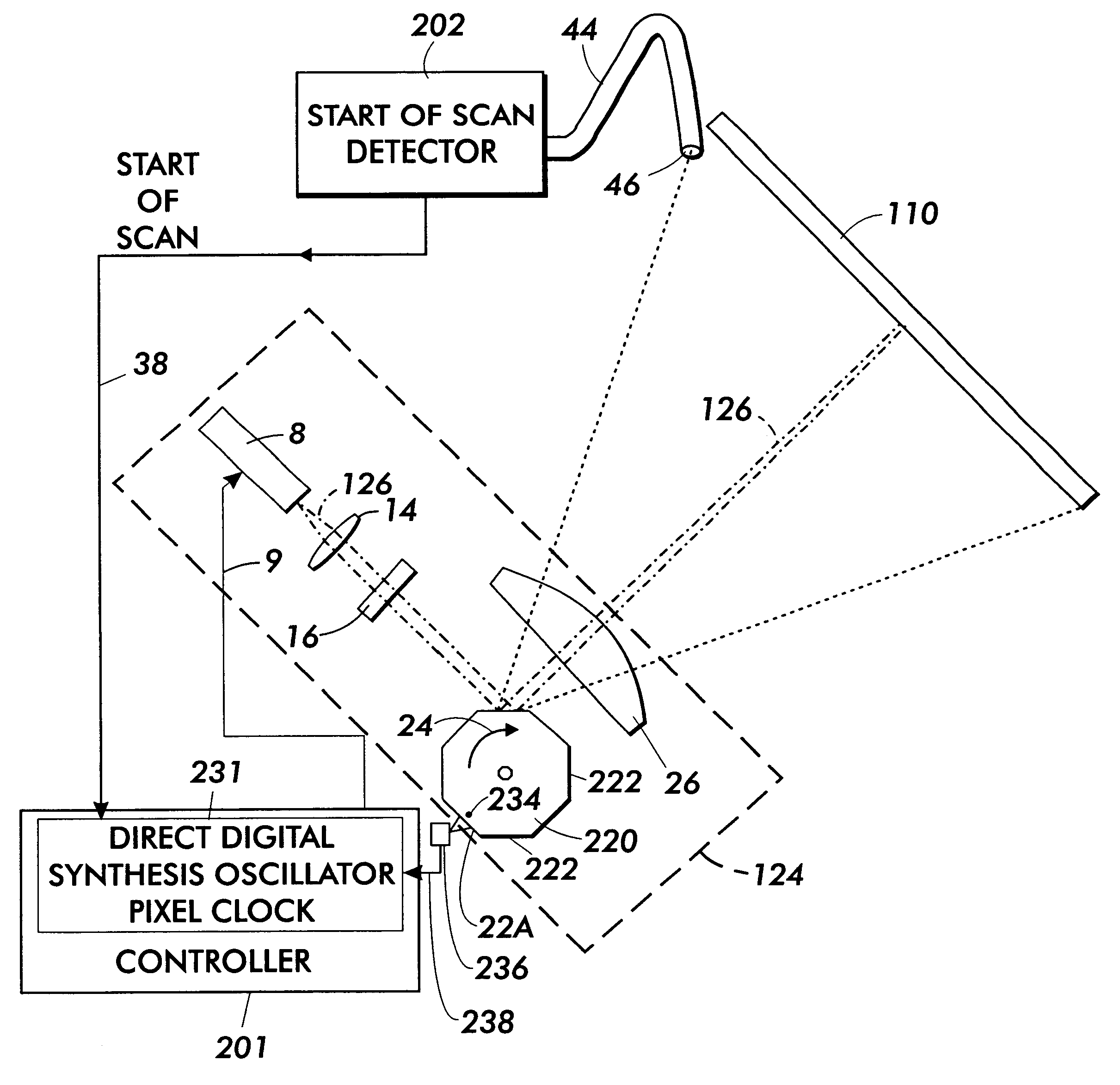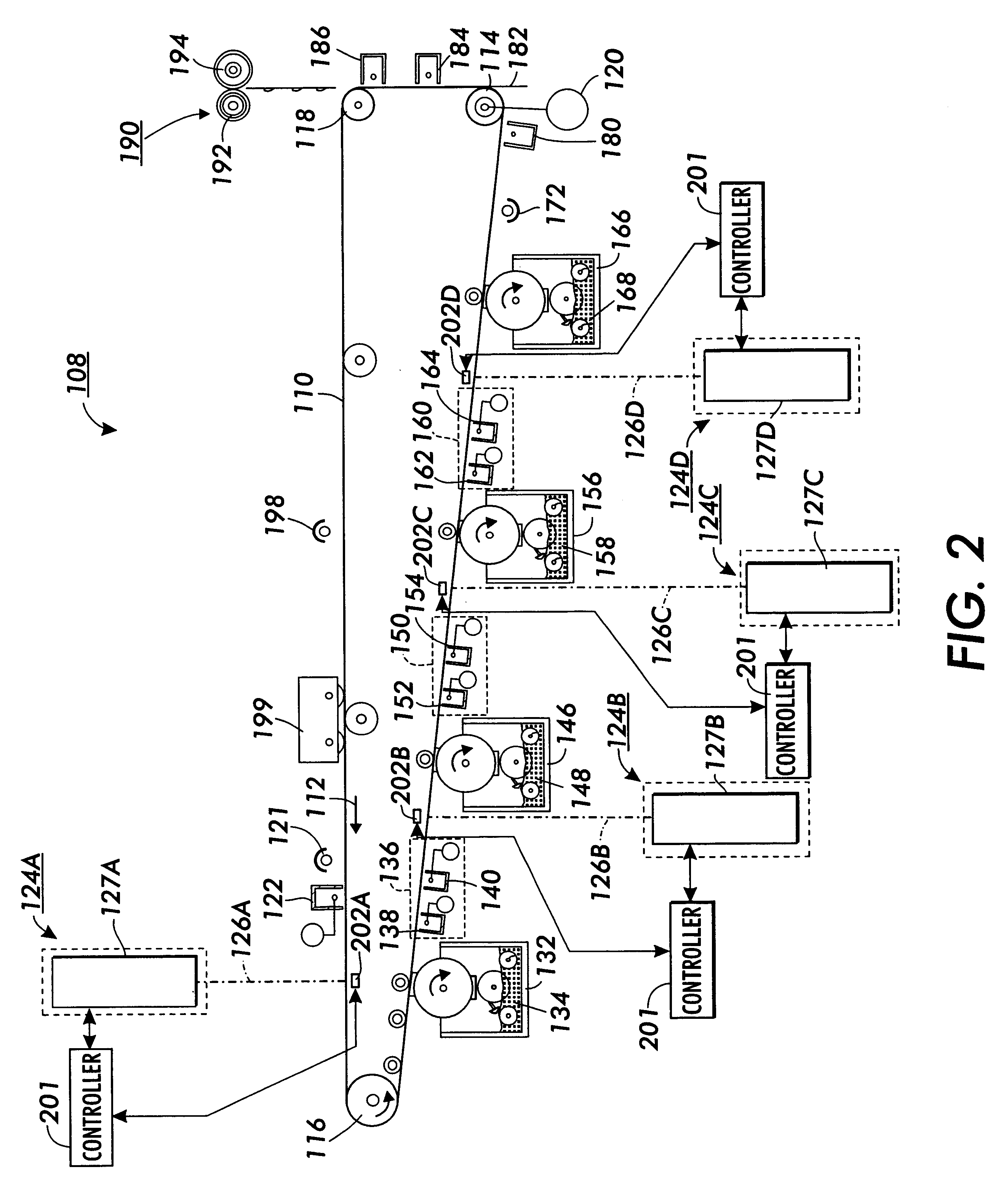Direct digital synthesis pixel clock generator
a digital synthesis and generator technology, applied in the field of electrotrophotographic marking, can solve the problems of high cost, difficult to obtain such scan lines from multiple imaging assemblies, and scan lines that, unless corrected, are shorter or longer than ideal
- Summary
- Abstract
- Description
- Claims
- Application Information
AI Technical Summary
Problems solved by technology
Method used
Image
Examples
Embodiment Construction
FIG. 2 illustrates a single pass, Recharge-Expose-and-Develop, Image-on-Image (Read IOI) color printer 108 that is in accord with the principles of the present invention. However, it is to be understood that the present invention is applicable to many other machines. Therefore, it is to be understood that the following description of the color printer 108 is only to assist the understanding of the principles of the present invention.
The color printer 108 includes a photoreceptor belt 110 which travels in the direction indicated by the arrow 112. Belt travel is brought about by mounting the photoreceptor belt about a driven roller 114 and about tension rollers 116 and 118, and then driving the driven roller 114 with a motor 120.
As the photoreceptor belt travels each part of it passes through each of the subsequently described process stations. For convenience, a single section of the photoreceptor belt, referred to as the image area, is identified. The image area is that part of the ...
PUM
 Login to View More
Login to View More Abstract
Description
Claims
Application Information
 Login to View More
Login to View More - R&D
- Intellectual Property
- Life Sciences
- Materials
- Tech Scout
- Unparalleled Data Quality
- Higher Quality Content
- 60% Fewer Hallucinations
Browse by: Latest US Patents, China's latest patents, Technical Efficacy Thesaurus, Application Domain, Technology Topic, Popular Technical Reports.
© 2025 PatSnap. All rights reserved.Legal|Privacy policy|Modern Slavery Act Transparency Statement|Sitemap|About US| Contact US: help@patsnap.com



